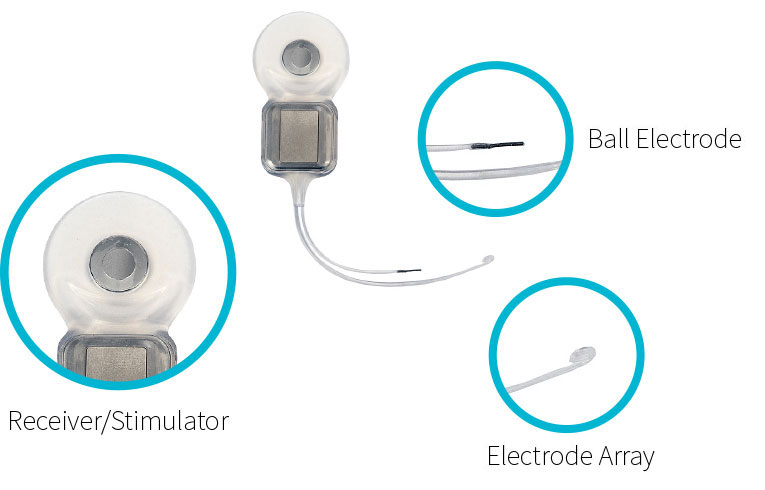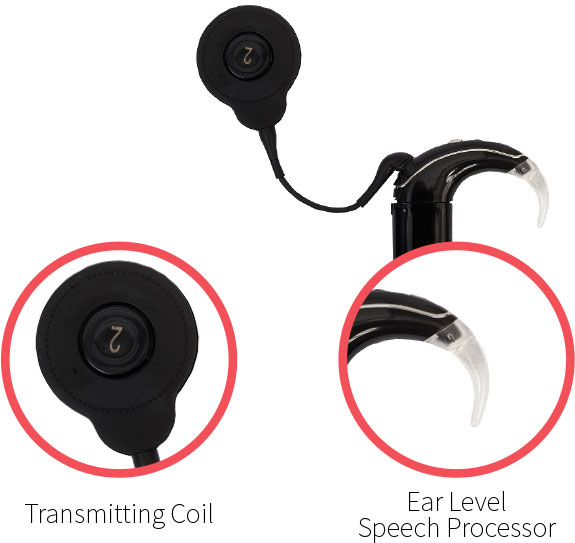The cochlear implant, regardless of the manufacturer, is comprised of 2 parts:
- internal portion (receiver)
- external portion (speech processor)
Internal Portion: Receiver
The internal device is implanted surgically and has a magnet, receiver, and an electrode array. The receiver is surgically placed under the skin behind the ear. The electrode array is inserted into the cochlea. More recent internal devices contain magnets which are MRI compatible. Still, a cochlear implant recipient should always contact their physician prior to undergoing an MRI.

External Portion: Speech Processor
The external portion – called the speech processor – can come in a variety of sizes and wearing options.
Standard features include:
- A battery is used to power both the external and internal portion.
- The processor which may be built within or connected to a headpiece via a cable.
- The headpiece contains a transmitting coil and magnet.
- The magnet attaches to the surface of the head where the internal portion of the implant is located and allows the transmitting coil to send the signal to the internal device.
Speech processors come in many styles including behind the ear, bodyworn, and single unit processors.
- These styles are available in an array of colors.
- Some processors are waterproof and can be worn in the pool or the bathtub.
- Processors can utilize rechargeable and/or disposable batteries.
- Microphones can be found directly on the processor (behind the ear models) or on the headpiece (body worn and single processor units).
- Volume changes can be made via controls directly on the unit for some processors. Others may require a remote control accessory or a phone application to make changes. Some processors provide both options.
- Some processors can connect to phones for direct streaming or utilize a streaming accessory to connect to phones or other audio devices (e.g., Televisions, computers, or audio systems).

How Does the Cochlear Implant Work?
Cochlear implants enable individuals with severe to profound hearing loss to hear by receiving and processing sounds and speech they were unable to access via a hearing aid. The internal and external devices work together to change sound into electrical signals that stimulate the hearing nerve.
- First, the microphone(s) located on the external device, picks up the sound energy. The speech processor (1) then filters, analyzes, and converts the sound energy into a digital code.
- That signal is sent through the cable to the headpiece where it is transmitted across the skin to the internal receiver (2), via radio frequencies.
- The internal receiver distributes the signal to the electrodes along the array which has been placed inside the cochlea (3).
- The electrodes send tiny electrical charges that stimulate the auditory nerve (4) which is connected to the cochlea. By stimulating the auditory nerve directly, the cochlear implant bypasses the damaged parts of the cochlea that cause hearing loss.
- The auditory nerve then carries the electrical signals to the brain where they are interpreted as sound. This process occurs so rapidly that the listener will hear speech and other sounds without any noticeable delay.
More information about specific cochlear implant manufacturers: